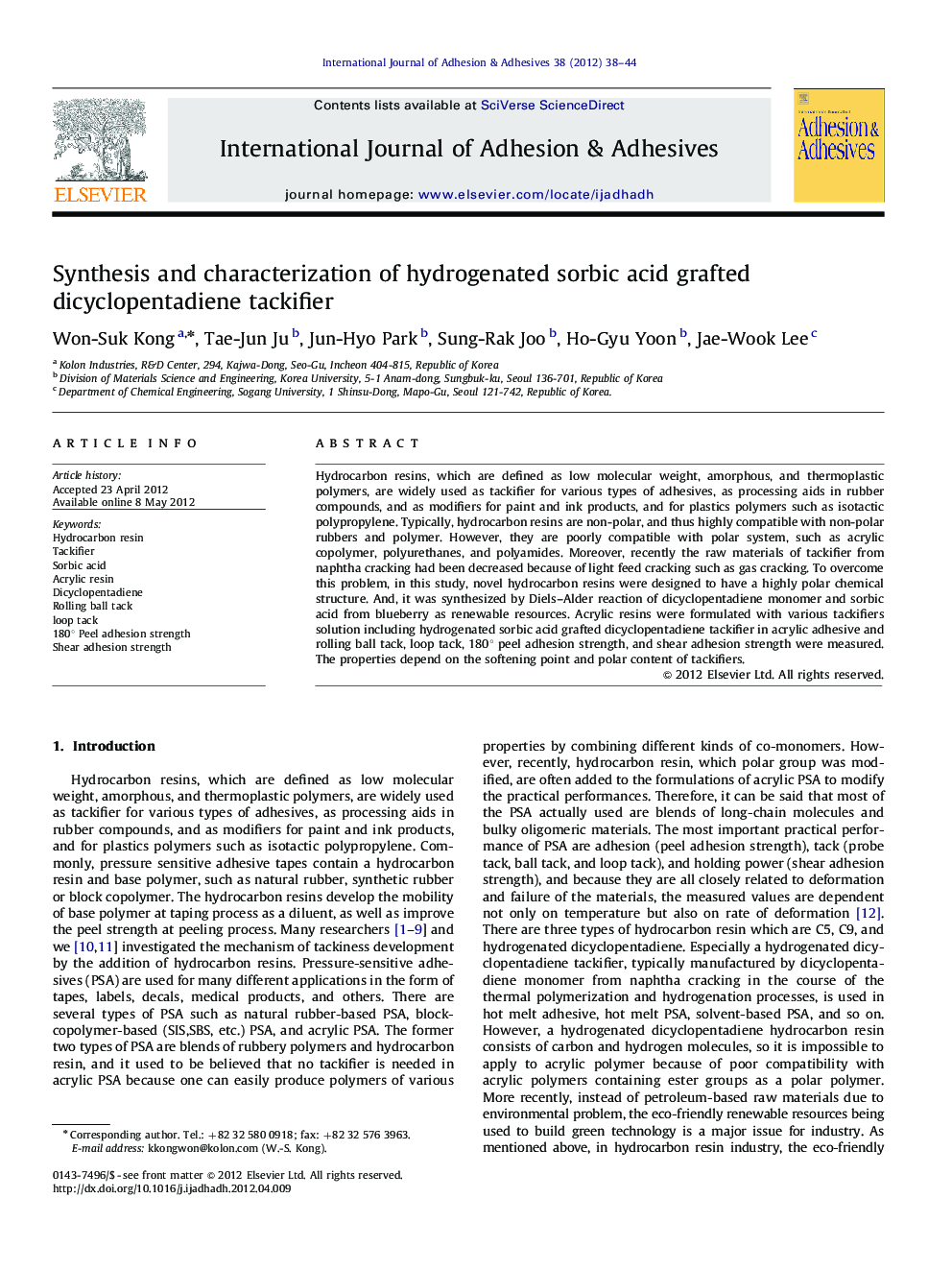| Article ID | Journal | Published Year | Pages | File Type |
|---|---|---|---|---|
| 776971 | International Journal of Adhesion and Adhesives | 2012 | 7 Pages |
Hydrocarbon resins, which are defined as low molecular weight, amorphous, and thermoplastic polymers, are widely used as tackifier for various types of adhesives, as processing aids in rubber compounds, and as modifiers for paint and ink products, and for plastics polymers such as isotactic polypropylene. Typically, hydrocarbon resins are non-polar, and thus highly compatible with non-polar rubbers and polymer. However, they are poorly compatible with polar system, such as acrylic copolymer, polyurethanes, and polyamides. Moreover, recently the raw materials of tackifier from naphtha cracking had been decreased because of light feed cracking such as gas cracking. To overcome this problem, in this study, novel hydrocarbon resins were designed to have a highly polar chemical structure. And, it was synthesized by Diels–Alder reaction of dicyclopentadiene monomer and sorbic acid from blueberry as renewable resources. Acrylic resins were formulated with various tackifiers solution including hydrogenated sorbic acid grafted dicyclopentadiene tackifier in acrylic adhesive and rolling ball tack, loop tack, 180° peel adhesion strength, and shear adhesion strength were measured. The properties depend on the softening point and polar content of tackifiers.
